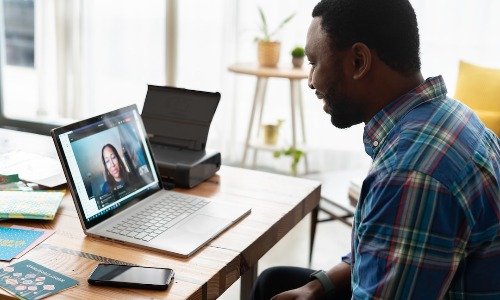The Future of Telemedicine and Patient Engagement
“The future of Telemedicine and Patient Engagement is driven by the combination of improving patient experience, while concurrently improving efficiencies in the delivery of safe and efficacious care” – Nicholas Webb
There are two heroes of the future of digital patient engagement, and they include Intelligent Additive Telemedicine (IAT), and Asynchronous Telemedicine (AT). The reason that these two approaches will be the heroes of the future of patient engagement includes the following key, patient, and enterprise benefits: Significant improvements in enterprise efficiency in the delivery of patient care, improvements in clinical quality and safety, improvements in experiences for both the provider and the patient. Below is a description of these two amazing solutions:
Intelligent Additive Telemedicine (IAT)
Intelligent Additive Telemedicine (IAT) will, in the first wave, leverage the camera and the microphone of existing connected technologies, such as smartphones and desktop computers. It will use the camera to conduct facial and spatial analysis to provide insights and data points so that Artificial Intelligence can identify potential diagnostic cues. It will also use intelligent listening to monitor the dialogue between the patient and the provider. On the provider side of the engagement, there will be a translucent screen that provides information that is delivered by IAT to make certain that the provider is addressing potential issues that were discovered during the dialogue between the provider and the patient. It will ultimately also populate medical health records, and automate many of the lab orders, patient follow-up, prescriptions, and other tasks. This is important because it will allow the provider to focus on the human connection with a patient. On the patient side of the screen, there will be a translucent dashboard that will leverage the same intelligent engine to remind the patient to ask the provider certain key questions, and also to share with the provider-specific symptoms based on the real-time dialogue of the interaction between the patient and the provider. The net result will be far better provider and patient experiences while improving the quality of clinical care, and patient safety.
Asynchronous Telemedicine (AT)
Patient engagement needs to square up with the current methods in which patients prefer to communicate. The popularity of Instagram, Snapchat, and TikTok demonstrates that we live in a communication landscape of asynchronous communications. Correspondingly, it only makes sense that we create alignment with the way in which patients prefer to communicate and the way in which we deliver safe and efficacious patient care. In addition to the incredible benefits of creating an alignment between the way in which we all prefer to communicate, and the way in which we engage healthcare, there are many other very important benefits. Over the next five years, healthcare will see continuous stressors on a system that is already at the brink of collapse. The only way that we can deliver on the promise of patient access is that we need to do it in a way that is an alignment with the value flow of healthcare. To use a cryptic example, we essentially provide a conveyor belt of healthcare that is constantly stopping. Traditional patient flows are extremely wasteful in terms of their efficiencies. In order for us to be able to deliver access to more patients in a way that also delivers a good experience. We need to deliver them asynchronously so that we can square up the schedule of the patient with the availability of the provider. My prediction is that a synchronous telemedicine will explode in the next 24 months.
In conclusion, healthcare, needs to do three things concurrently. Healthcare needs to significantly improve the human experience for the patient, and leverage technology to drive improved clinical quality and safety. Lastly, it needs to leverage technologies to significantly improve healthcare enterprise efficiency to reduce cost. Poetically, these two amazing technologies do all three.
